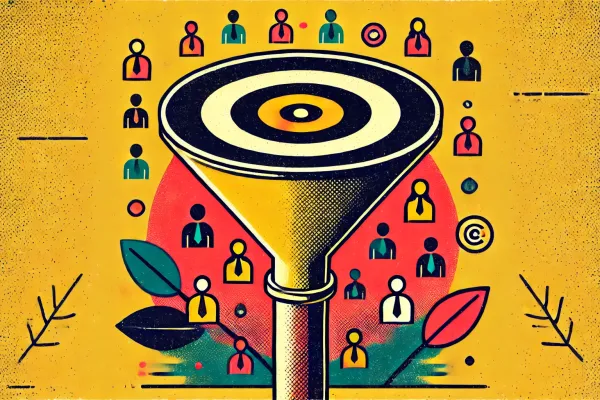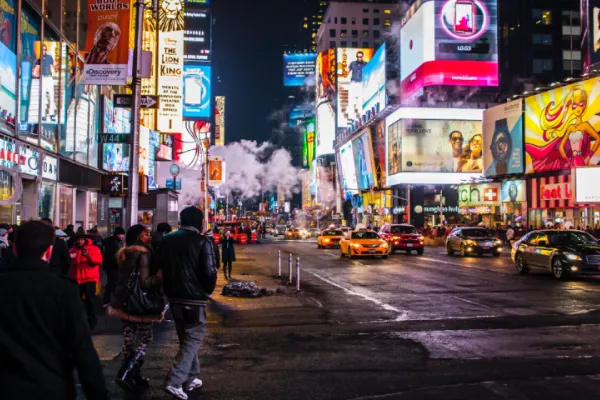 Details
Details

By Alex Jones
Hallam Internet, Digital Marketing Manager
Nottingham, UK
Connect
From an agency perspective, there is a lot of excitement and some confusion surrounding the broad topic of native advertising. Some brands and agencies are adopting native advertising at a fast pace, but others are still reluctant to use it, or are struggling.
Platforms like Yahoo, Gemini, Outbrain and Taboola are popular choices for hosting native advertising pieces, which are then placed within content streams on other sites. The ads are tagged as sponsored and have different visual styles for exposure.
Since marketing agencies work in a fast paced industry, you’d expect them to adapt to this trend quickly, but for some reason, native advertising appears to be an overwhelming concept. Although agencies use several different strategies such as paid search and content marketing to promote and grow brands, native ads are often only a small part of digital marketing plans.
Quality over quantity applies to many things in life, including website traffic. Native ads can attract a much higher quality visitor.
READ OUR ULTIMATE GUIDE: What is Native Advertising?
Are Native Ads Worth it?
There is evidence that spending on native ads is increasing significantly, and will continue to grow in coming years. A recent report by eMArketer outlined that native ad spend is expected to reach $22bn this year in the US, comprising 52.9% of display ad investment, which is a phenomenal market share.
Those adopting native advertising can see its benefits. In 2017, the standard banner or sidebar ads aren’t as effective as they once were. Native ads are a less intrusive alternative to these online ads and are less likely to repel consumers.
Quality over quantity applies to many things in life, including website traffic. Native ads can attract a much higher quality visitor.
Another key benefit is the ability to influence consumers in a non-traditional way and subtlety leverage a brand’s message and increase trust in them.
Agencies’ clients are looking to increase the reach of their brand and improve the quantity and quality of qualified leads. If you don’t offer them native advertising, there will be agencies or publishers out there that do.
Many marketers have never run native ads and don’t plan to because they don’t know how.
READ MORE: NATIVE ADVERTISING GLOSSARY – YOU ASK, WE ANSWER
The hurdles in agency adoption
One main hurdle agencies face when adopting native advertising is getting it to fit alongside other forms of advertising, like display and video, in their media plans. Native advertising doesn’t fit neatly into other pricing methodologies commonly used in the industry. Nor does it use impressions in the same way that banner ads do, so charging per impression can be tricky.
Most advertisers aren’t trying to drive traffic to their site, instead, they’re hoping that visitors consume their content and drive leads. So, charging per click doesn’t make much sense either.
READ MORE: THE TOP 5 NATIVE ADVERTISING PLATFORMS RIGHT NOW
There is also some confusion about what native advertising is. Dozens of agencies claim to do native advertising but they have different understandings of the topic.
Many marketers have never run native ads and don’t plan to because they don’t know how.
Another hurdle is the lack of time and resources to create content and track how effective it is. Believe it or not, many agencies lack resource with the skills to create native content that meets high editorial standards. If the goal is to convert new customers, then the content creators need to understand their company's products or services and this takes time and effort.
Top tip: Always have an understanding of where your client’s content is shown (e.g. in feed, as recommendation, both) and tailor this content accordingly.
Top tip: Create compelling content that potential customers want to see in their feeds. You should play around and see what works.
Top tip: Pay attention to headlines, as these play a huge role in the success of native ads
Where do you start?
Native advertising also adds another cook to the marketing pot and this can be frustrating when aligning multiple marketing strategies. Sometimes it is easier to just not consider native ads.
RELATED: Agencies Are Letting Brands Get Away with Sloppy Briefs and Price Cutting
And when you are considering native ads, where do you start? Seeing as there is such a low barrier to entry, we are now seeing the market growing with new customisable platforms. There are a vast number of vertical networks, independent trading desks, and unique start-up services. These new entrants are leveraging great publisher and brand relationships and often use unique data to shape their activity.
There is a huge opportunity for businesses and agencies to invest in innovation without having to build technology from scratch, so we should be using these platforms.
You should invest more in the native channels that work for you.
READ MORE: This guide will help you create better advertorials
Just do it!
Just do it. For agencies to eventually sell native campaigns directly, it is worthwhile trying out at least one of the many native ad networks.
Every channel has a different format, and different channels have different partners can help you connect with users. Naturally, you should invest more in the native channels that work for you. It will take time to understand the different native ad types and best practices.
Be inspired – check out the top native advertising examples this year (so far)



